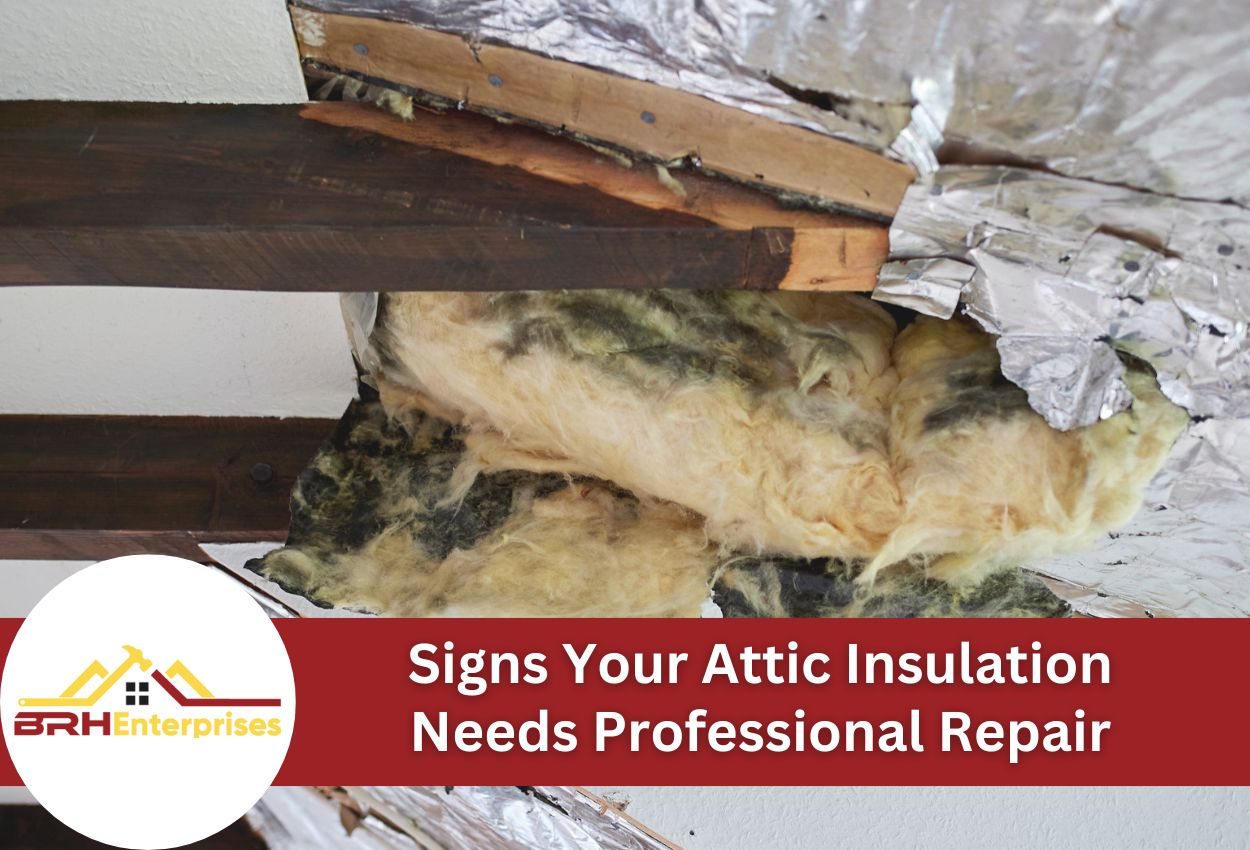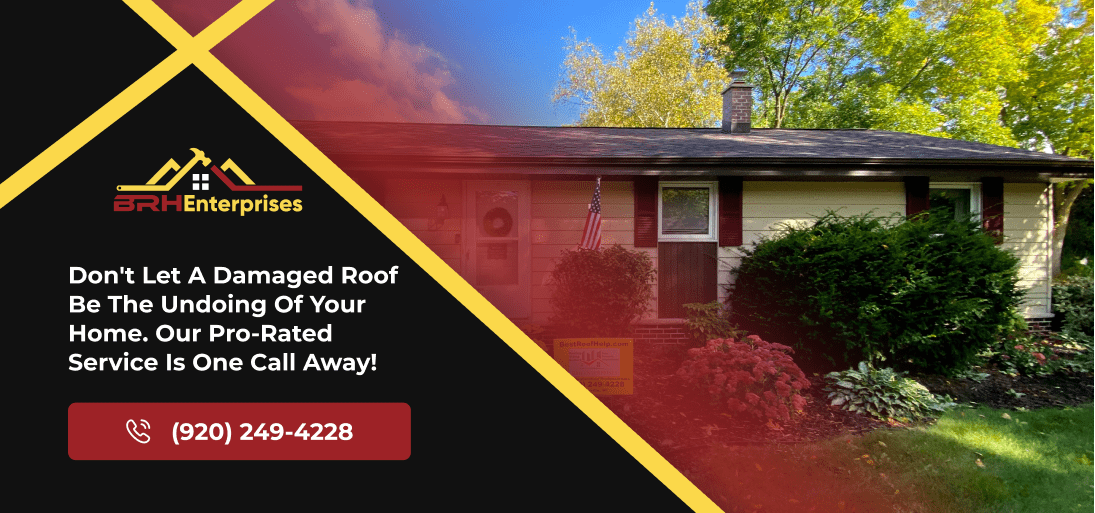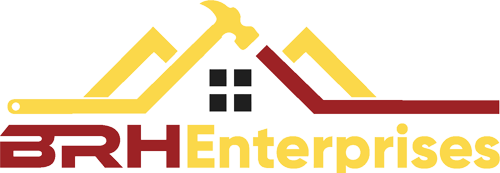Signs Your Attic Insulation Needs Professional Repair
Estimated Reading Time : 6 Min.

Attic insulation plays an important role in maintaining your home’s energy efficiency and indoor comfort throughout Wisconsin’s harsh winters and humid summers. When this protective barrier begins to fail, homeowners often notice immediate changes in their living environment and monthly utility expenses. Damaged attic insulation creates a bunch of additional problems that extend far beyond simple temperature control issues.
Temperature fluctuations between rooms, unexplained spikes in heating and cooling bills, and persistent drafts signal that your insulation system may require professional attention. These warning signs often develop gradually, making them easy to overlook until the problems become severe enough to impact daily comfort and household budgets.
Physical deterioration of insulation materials presents equally concerning indicators that need immediate evaluation. Settling, moisture damage, pest contamination, and visible gaps in coverage compromise the thermal envelope that keeps your home comfortable and energy-efficient. Water stains on attic surfaces, musty odors, and visible mold growth can indicate a leak that can rapidly destroy how effective your insulation is.
Recognizing these warning signs early allows homeowners to address insulation problems before they escalate into expensive structural damage or create unhealthy indoor air quality conditions. Professional insulation assessment identifies both obvious damage and hidden issues that untrained eyes typically miss during routine attic inspections.
Understanding the Impact of Damaged Attic Insulation on Your Home
When damaged attic insulation compromises your home’s thermal barrier, the effects ripple throughout your entire living space. Compromised insulation creates uneven temperature distribution, leaving some rooms uncomfortably warm while others remain persistently cold. This temperature inconsistency forces HVAC systems to run longer cycles and work significantly harder to maintain desired comfort levels, particularly during Wisconsin’s extreme seasonal weather variations.
The immediate impact on indoor comfort becomes most noticeable during peak heating and cooling seasons. Hot spots develop in upper floors during the summer, while drafty conditions plague lower levels throughout winter. These comfort issues stem directly from thermal bridging and air leaks that occur when insulation materials deteriorate or shift from their intended positions.
Long-term consequences of ignoring damaged attic insulation go beyond comfort concerns. Increased utility expenses accumulate month after month as heating and cooling systems compensate for inadequate thermal protection. The constant moisture fluctuations that result from poor insulation performance create conditions favorable to mold growth and structural damage within wall cavities and attic spaces.
Indoor air quality deteriorates when compromised insulation allows outdoor pollutants, allergens, and humidity to infiltrate living spaces. These infiltration issues compound over time, creating health concerns for occupants while simultaneously reducing the overall value and structural integrity of the property through moisture-related damage.
The Professional Insulation Assessment and Inspection Process
A comprehensive attic insulation evaluation begins with qualified contractors conducting systematic R-value testing to determine the current thermal performance of existing materials. Professional assessments utilize specialized equipment to measure insulation depth, density, and overall effectiveness across the entire attic space. This thorough evaluation identifies areas where insulation has settled, shifted, or degraded beyond acceptable performance standards.
Advanced tools play an important role in detecting problems that visual inspections cannot reveal. Thermal imaging cameras pinpoint temperature variations that indicate air leaks and thermal bridging, while moisture meters identify areas where water leaks have compromised insulation materials. These sophisticated instruments allow contractors to map problem areas without disturbing properly functioning insulation sections.
Air leak detection is an important component of professional insulation assessment services. Contractors employ blower door tests and smoke pencils to locate gaps and cracks that allow conditioned air to escape into attic spaces. This approach to attic air sealing evaluation ensures that both insulation deficiencies and air infiltration issues receive appropriate attention during the diagnostic process.
The inspection process documents specific repair needs while preserving intact insulation materials whenever possible. Professional roofing contractors differentiate between areas requiring complete insulation replacement and sections that benefit from targeted blown-in insulation repair or supplemental coverage. This methodical approach ensures homeowners receive accurate assessments that address actual problems without unnecessary material removal or replacement expenses.
The Available Types of Attic Insulation Repair
Professional attic insulation repair encompasses targeted solutions designed to address specific damage patterns while preserving functional materials throughout the attic space. Contractors employ strategic patching techniques that restore thermal performance in localized problem areas without disrupting surrounding insulation systems. These precise repair methods are particularly effective for addressing moisture damage, pest intrusion zones, and areas where insulation has shifted or compressed over time.
Spot treatment options provide cost-effective solutions for homeowners dealing with isolated insulation failures. Blown-in insulation repair techniques allow contractors to supplement thin areas and fill gaps without removing existing materials that continue to perform adequately. Partial replacement strategies target severely compromised sections while maintaining thermal continuity across the entire attic floor space.
Complete insulation replacement becomes necessary when damage extends throughout the attic or when existing materials have deteriorated beyond effective repair. These solutions often present opportunities to upgrade insulation R-values and incorporate modern materials that outperform older systems. Full replacement projects typically include attic air sealing measures that address underlying air leak problems contributing to insulation failure.
Modern replacement scenarios frequently combine multiple insulation types to maximize thermal performance and longevity. Contractors may recommend hybrid systems that utilize both batt and blown-in materials to achieve the best coverage while addressing unique architectural features and ventilation requirements specific to each attic configuration.
Air Sealing Integration with Insulation Repair Work
Effective attic insulation repair goes beyond simply replacing damaged materials to include air sealing measures that address the root causes of thermal inefficiency. Air leaks and thermal bridging significantly undermine insulation performance by allowing conditioned air to escape while permitting outdoor air to infiltrate living spaces. Professional contractors recognize that addressing these infiltration pathways during insulation repair maximizes energy efficiency improvements and prevents future moisture problems that commonly lead to insulation degradation.
Thermal bridging occurs when structural elements create continuous pathways for heat transfer that bypass insulation materials entirely. These thermal weak points allow temperature fluctuations to get into the building even when adequate insulation coverage exists. Combining air sealing techniques with damaged attic insulation repair eliminates these performance gaps while creating a more robust thermal barrier system.
Professional air sealing techniques commonly employed during insulation replacement include strategic caulking around gaps where electrical wires, plumbing, and HVAC ducts pass through attic floor surfaces. Weatherstripping applications seal gaps around access hatches and fold-down stairs that frequently create significant air leakage pathways. Expanding foam is an effective solution for sealing larger gaps and irregular openings that traditional caulking materials cannot adequately address.
Proper integration of these air sealing methods with blown-in insulation repair ensures that the entire attic system functions as a cohesive thermal barrier rather than individual components working independently. This approach delivers superior long-term performance while protecting the insulation investment from moisture infiltration and air movement that typically cause premature material failure.
Blown-In Insulation Repair and Enhancement Methods
Blown-in insulation repair methods offer distinct advantages over traditional batt replacement techniques when addressing damaged attic insulation problems. The pneumatic installation process allows contractors to achieve complete coverage in irregular spaces around joists, pipes, and electrical fixtures where conventional materials struggle to provide adequate thermal protection. This superior conformability makes blown-in materials particularly effective for filling voids left by settled or displaced insulation without requiring extensive removal of existing materials.
The ability to add density to thin insulation areas represents another significant benefit of blown-in repair applications. Contractors can supplement underperforming sections by adding new material directly over existing insulation, effectively increasing R-values without disturbing properly functioning areas. This targeted enhancement approach is especially valuable when dealing with insulation that has compressed over time or shifted away from critical thermal bridging locations.
Hard-to-reach areas that typically challenge conventional insulation replacement become accessible through blown-in installation techniques. Contractors can effectively insulate around HVAC ducts, recessed lighting fixtures, and other obstructions that create gaps in traditional batt installations. The material flows naturally into these confined spaces, creating continuous thermal barriers that eliminate cold spots and air leak pathways.
Integration techniques for combining blown-in materials with existing insulation types require careful attention to settling characteristics and distribution patterns. Professional contractors evaluate compatibility between old and new materials while ensuring proper ventilation pathways remain unobstructed. Strategic placement prevents compression of underlying insulation while achieving uniform coverage that maintains consistent R-values throughout the attic space.
Selecting the Right Contractor for Your Attic Insulation Repair
Finding qualified contractors for attic insulation repair requires careful evaluation of essential credentials that demonstrate expertise in energy efficiency practices and thermal barrier restoration. Licensed insulation professionals possess the technical knowledge necessary to accurately assess damaged attic insulation while recommending appropriate repair solutions that address underlying performance issues. Valid licensing ensures contractors understand building codes, safety protocols, and installation standards specific to Wisconsin’s climate requirements.
Insurance coverage is a critical protection for homeowners undertaking insulation replacement projects. Liability insurance protects property owners from potential damages, while workers’ compensation coverage ensures contractor employees receive protection during repair work. These insurance requirements become particularly important when contractors access confined attic spaces where accidents or property damage could occur during blown-in insulation repair procedures.
Specialized training in energy efficiency practices distinguishes qualified insulation contractors from general construction workers. Professional certifications demonstrate expertise in thermal bridging principles, attic air sealing techniques, and proper R-value calculations that ensure the best possible performance outcomes. These qualifications indicate contractors understand the relationship between air leak control and insulation effectiveness when addressing repair needs.
Requesting detailed information about repair approaches, material recommendations, and warranty coverage helps homeowners evaluate contractor capabilities before committing to specific repair solutions. Professional contractors provide realistic timeline expectations while explaining how their methods address both immediate insulation problems and long-term performance concerns. This thorough communication process ensures alignment between homeowner expectations and contractor capabilities throughout the insulation assessment and repair process.
Expert Attic Insulation Repair Services in Southern Wisconsin
If you’ve noticed signs of damaged attic insulation, such as uneven temperatures, high energy costs, or visible moisture issues in your home, it’s crucial to act quickly. Damaged insulation not only compromises your comfort but can also lead to significant energy loss and structural damage over time. At BRH Enterprises LLC, we specialize in diagnosing and repairing attic insulation issues with precision. Our team uses the latest diagnostic tools to conduct thorough insulation assessments, ensuring we identify all problem areas without overlooking any minor details.
Don’t let damaged insulation impact your home’s efficiency and comfort. Call us today at (920) 249-4228 to schedule a professional insulation evaluation and discover our effective repair solutions.


